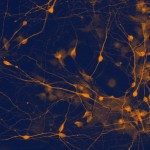Link to Pubmed [PMID] – 29487905
Link to DOI – 10.1126/sciadv.aao6086
Sci Adv 2018 02; 4(2): eaao6086
Crucial for any hypothesis about odor coding is the classification and prediction of sensory qualities in chemical compounds. The relationship between perceptual quality and molecular structure has occupied olfactory scientists throughout the 20th century, but details of the mechanism remain elusive. Odor molecules are typically organic compounds of low molecular weight that may be aliphatic or aromatic, may be saturated or unsaturated, and may have diverse functional polar groups. However, many molecules conforming to these characteristics are odorless. One approach recently used to solve this problem was to apply machine learning strategies to a large set of odors and human classifiers in an attempt to find common and unique chemical features that would predict a chemical’s odor. We use an alternative method that relies more on the biological responses of olfactory sensory neurons and then applies the principles of medicinal chemistry, a technique widely used in drug discovery. We demonstrate the effectiveness of this strategy through a classification for esters, an important odorant for the creation of flavor in wine. Our findings indicate that computational approaches that do not account for biological responses will be plagued by both false positives and false negatives and fail to provide meaningful mechanistic data. However, the two approaches used in tandem could resolve many of the paradoxes in odor perception.

